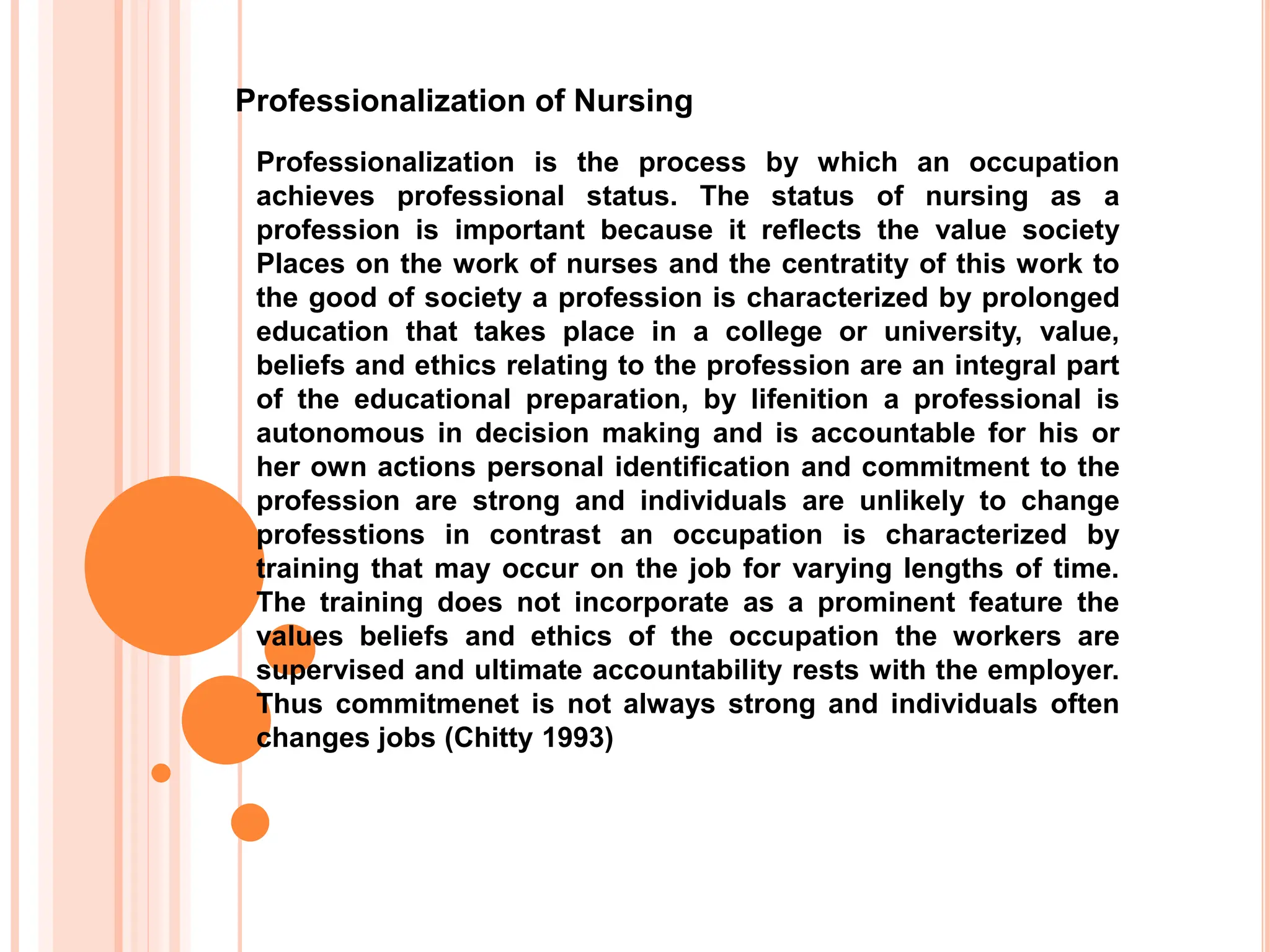This document discusses quality assurance in nursing. It defines quality assurance as monitoring nursing activities to determine the level of excellence in patient care. The document outlines the components of a quality improvement program, including establishing accountability, defining key aspects of service, developing quality indicators, and communicating results. It also discusses different approaches to quality assurance programs, such as general and specific approaches, as well as nursing audits as a method of evaluating nursing documentation and care.




















































